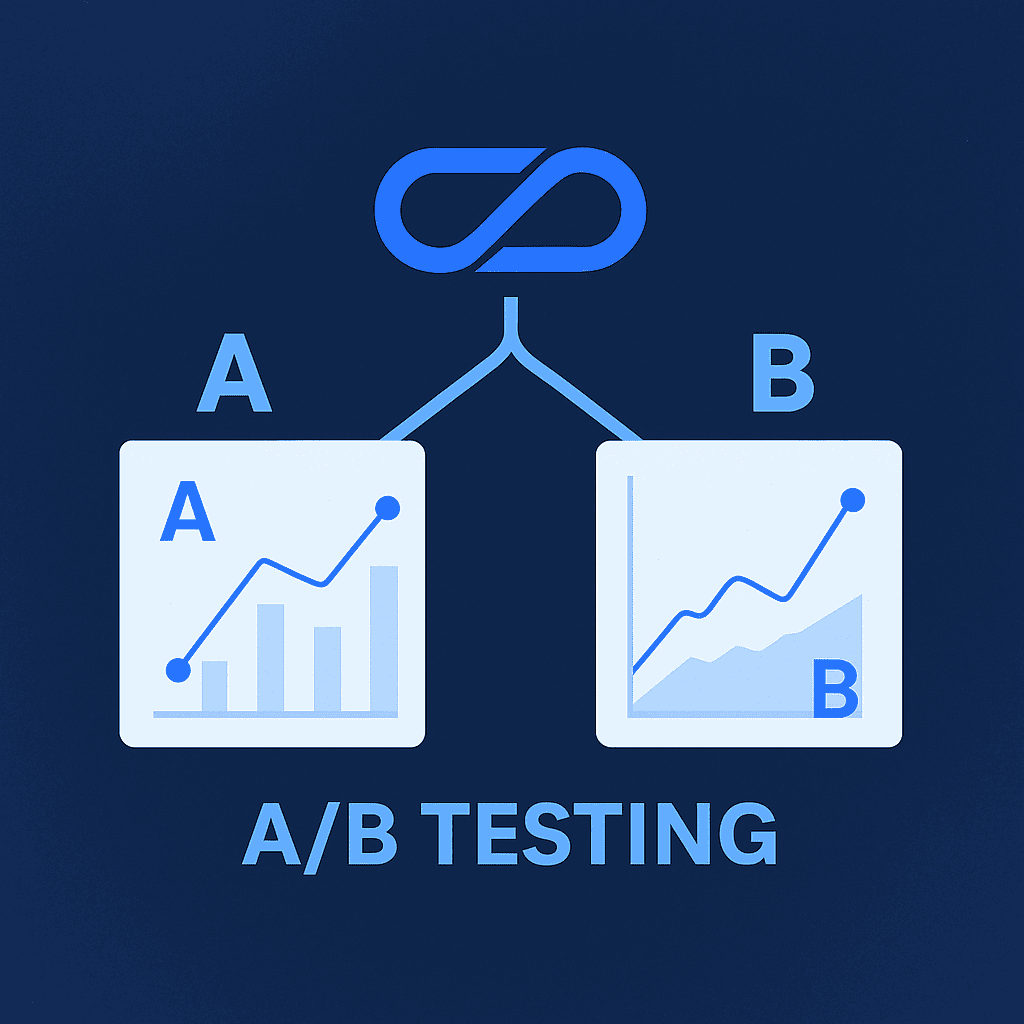You can spend hours writing headlines, tweaking buttons, or redesigning a landing page. But in marketing, what you think works and what your audience actually responds to are often two very different things.
That’s where A/B testing comes in. It’s not a buzzword. It’s how you stop guessing and start learning from real user behaviour.
And when it comes to links, the starting point of every campaign, A/B testing can quietly make or break your results.
What A/B Testing Really Means
At its core, A/B testing is simple.
You create two versions of something, version A and version B, and see which one performs better.
For example:
- Two headlines on the same sales page
- Two different CTAs in an email
- Two landing pages offering the same product but with slightly different layouts
Instead of assuming which will work best, you send each version to a portion of your audience, measure the response, and let the numbers decide.
It sounds small, but this process helps you make confident decisions instead of emotional ones.
Why It Matters for Links
Every conversion starts with a click, and every click comes from a link. If the link doesn’t perform well, the entire funnel struggles, no matter how good your offer or ad is.
Testing links isn’t just about shortening or cloaking them. It’s about learning:
- Which landing page converts better
- Which traffic source sends more engaged visitors
- Which call-to-action drives more clicks
By testing links, you get a clear view of what’s actually working across your campaigns, and that’s how small tweaks lead to big changes in revenue.
The Problem With Guessing
Most marketers skip A/B testing for one simple reason: they think they already know what their audience wants. But, They don’t.
Even seasoned marketers get it wrong all the time, a headline they swear would convert better underperforms or a CTA they almost didn’t use ends up becoming the top performer.
Without testing, you’re not optimizing, you’re gambling. Testing gives you proof.
It tells you which link, which message, and which flow actually earns clicks and conversions.
Real Example: One Link, Two Outcomes
Imagine you’re promoting an affiliate product with two different landing pages.
One focuses on storytelling, and the other goes straight to the offer.
You could send all your traffic to one and hope for the best, or you could create a single link that splits the traffic evenly between both.
After a few days, you’ll see the truth. If the story-focused page converts 30 percent higher, you now know which one to keep scaling.
That’s A/B testing in action. Clarity without bias.
How Linkspally Makes It Easy
If you’re using WordPress, you don’t need complex external tools to run link-based tests. Linkspally handles it directly from your dashboard.
Here’s how it works:
- Create a new link and add multiple destination URLs.
- Set how you want traffic distributed.
- Track which destination gets more clicks and conversions.
You can even add a tracking pixel to measure actual sales, not just clicks. No spreadsheets, no guesswork, just real numbers showing what’s working.
From Data to Decisions
Data on its own doesn’t mean much. The value is in how you use it.
When you A/B test your links, you learn:
- What type of audience responds best to each message
- Which channels are worth investing more in
- How to reduce wasted ad spend on weak campaigns
This helps you make decisions based on facts, not feelings. You’ll know exactly which approach deserves your next dollar.
Small Tests, Big Difference
The truth is, most improvements don’t come from major redesigns or overhauls. They come from small, repeated experiments.
- A headline that converts one percent better.
- A landing page that loads faster.
- A link that sends people to a better experience.
Those small wins compound over time, and that’s how top marketers grow without chasing trends, they just test what matters.
Final Thought
If your marketing strategy starts with links, and it does, then testing them should be part of your routine.
You don’t need complex analytics or big budgets to make smart decisions. You just need the right data from the right tool. Linkspally helps you find what really works.
And when you start testing instead of guessing, your marketing becomes simpler, sharper, and more predictable.
